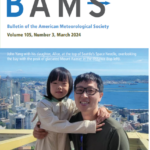Publication – Environmental News Network
Date: May 28, 2012
Climate change doubt not due to ignorance of the science
A new study by Yale revealed if Americans knew more basic science, and were more proficient in technical reasoning, a gap would still occur between public and scientific consensus.
According to the article, “ … as members of the public become more science literate and numerate, the study found, individuals belonging to opposing cultural groups become even more divided on the risks that climate change poses.” The study was funded by the National Science Foundation and was conducted by researchers associated with the Cultural Cognition Project at Yale Law School. The study also involved a nationally representative sample of 1500 U.S. adults.
“The aim of the study was to test two hypotheses,” Dan Kahan, Elizabeth K. Dollard professor of Law and professor of Psychology at Yale Law School and a member of the study team, told Environmental News Network . “The first attributes political controversy over climate change to the public’s limited ability to comprehend science, and the second, to opposing sets of cultural values. The findings supported the second hypothesis and not the first,” he said.
Publication – NewsWire
Date: May 29, 2012
Discovery of historical photos sheds light on Greenland ice loss
With the discovery of 80-year-old photo plates in a Danish basement, new insight was made into how Greenland glaciers are melting today.
Ohio State University researchers and colleagues in Denmark describe how they analyzed ice loss in the region through the comparison of the images on the plates to aerial photographs and satellite images taken from World War II to today.Taken together, the imagery shows that glaciers in the region were melting even faster in the 1930s than today, said Jason Box, associate professor of geography and researcher at the Byrd Polar Research Center at Ohio State. A brief cooling period starting in the mid-20th century allowed new ice to form, and then the melting began to accelerate again in the 2000s.
“Because of this study, we now have a detailed historical analogue for more recent glacier loss,” Box told NewsWire. “And we’ve confirmed that glaciers are very sensitive indicators of climate.”
Publication – AlertNet
Date: May 31, 2012
Biogas project helps Kenyan school save money, trees
At Gachoire Girls Secondary School in Kenya, the kitchens cook meals with biogas produced from the students’ own toilet waste instead of the more typically charcoal and firewood.
According to the article, “Since 2006, biogas has been a key resource for the 36-year-old school in Central Kenya, saving the expense of buying fuel and emptying latrines, while also preserving a significant number of trees and reducing carbon dioxide emissions from burning wood.”
The school has become a model of how the effects of climate change can be mitigated at the local level.
“If all schools, both primary and secondary, took up this initiative, I think after a few years we can count how much carbon we have saved from the atmosphere by sparing the trees and our forests,” said Esther Lung’ai, a local project officer at the Arid Lands Information Network, a non-governmental organization, to AlertNet.
Publication – Science Daily
Date: June 1, 2012
Plants previously thought to be ‘stable’ found to be responding to climate change
Researchers at UC Santa Barbara’s National Center for Ecological Analysis and Synthesis (NCEAS) found that many wild plant species thought to be “stable” in terms of climate change are actually responding to global warming.
Their study titled, “Divergent responses to spring and winter warming drive community level flowering trends,” found a number of wild plant species previously thought to be unresponsive to the trend of warmer and earlier springs are actually responding to climate temperature change in a manner that is not as easily seen as in plants that exhibit earlier flowering in response to an advanced spring.
“For a large subset of species that were not shifting their flowering earlier, the lack of response was not due to any insensitivity to climate change,” said Benjamin Cook, who led the research by a working group at NCEAS, to Science Daily. Rather, he said, these plants were actually responding to the trend of warmer winters by delaying flowering, and then to the advanced spring by speeding up flowering.
Publication – Science Daily
Date: June 1, 2012
Some butterfly species particularly vulnerable to climate change
A recent study involving the impact of climate change on butterflies suggests “some species might adapt much better than others, with implications for the pollination and herbivory associated with these and other insect species.”
The research examined the changes in the life cycles of butterflies at various elevations on a mountain range located in central Spain. The results then “served as a model for some of the changes expected to come with warming temperatures, particularly in mountain landscapes.”
The researchers found that butterflies, which already tend to emerge later in the year or fly higher in the mountains, have evolved to deal with a shorter window of opportunity to reproduce. As a result, the species may fare worse in a warming climate, compared to those that emerge over a longer time period.
“Insects and plants are at the base of the food pyramid and are extremely important, but they often get less attention when we are studying the ecological impacts of climate change,” Javier G. Illan, with the Department of Forest Ecosystems and Society at Oregon State University, told Science Daily.
Have you seen breaking climate change news or discussion that should be included in our next “Roundup?” Let us know!






